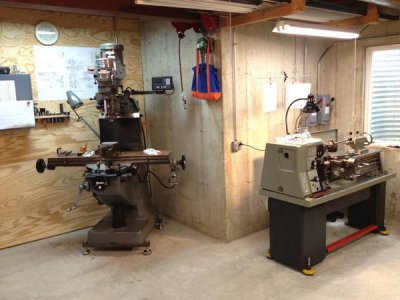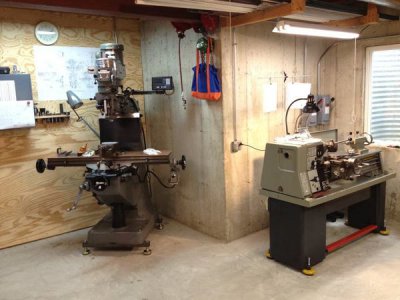- Joined
- Oct 30, 2012
- Messages
- 960
Piecing it out and lugging it down to the basement is pretty common albeit pita.
Drilling it full of holes to save even 200# is a cute idea and I dont fault ya for throwing the idea out- but no. It will still be over 1,000 lbs and roughly equal work getting it down. Plus you would have a butched machine.
My shop is in the basement and in my view well worth the effort to get things down. Cool in the summer, warm in the winter and very low/constant humidity. Granted some basements are humid but the temp swings and condensation are what really do things in in garages and sheds.
If you have enough physical clearance to get the pc's in and the floors/stairs are sturdy and momma wont kill you for banging up the floors doors and woodwork go for it. Hopefully you got a 30yr fixed mortgage not a 3 yr arm and
Btw who keeps letting you out of your box?
Look It can be done...


Drilling it full of holes to save even 200# is a cute idea and I dont fault ya for throwing the idea out- but no. It will still be over 1,000 lbs and roughly equal work getting it down. Plus you would have a butched machine.
My shop is in the basement and in my view well worth the effort to get things down. Cool in the summer, warm in the winter and very low/constant humidity. Granted some basements are humid but the temp swings and condensation are what really do things in in garages and sheds.
If you have enough physical clearance to get the pc's in and the floors/stairs are sturdy and momma wont kill you for banging up the floors doors and woodwork go for it. Hopefully you got a 30yr fixed mortgage not a 3 yr arm and
Btw who keeps letting you out of your box?
Look It can be done...




